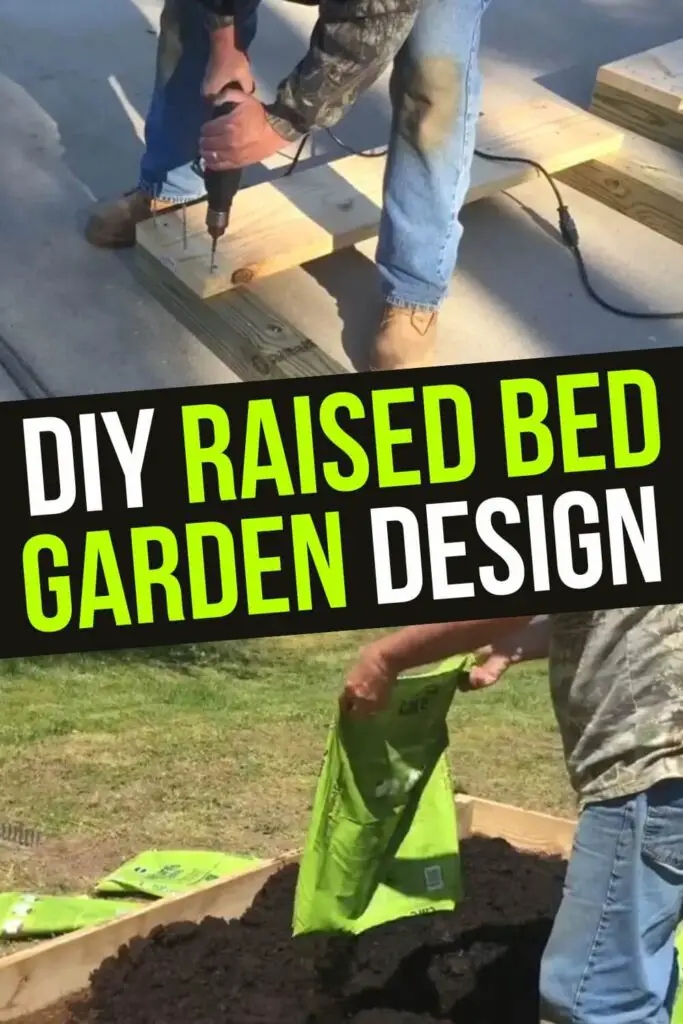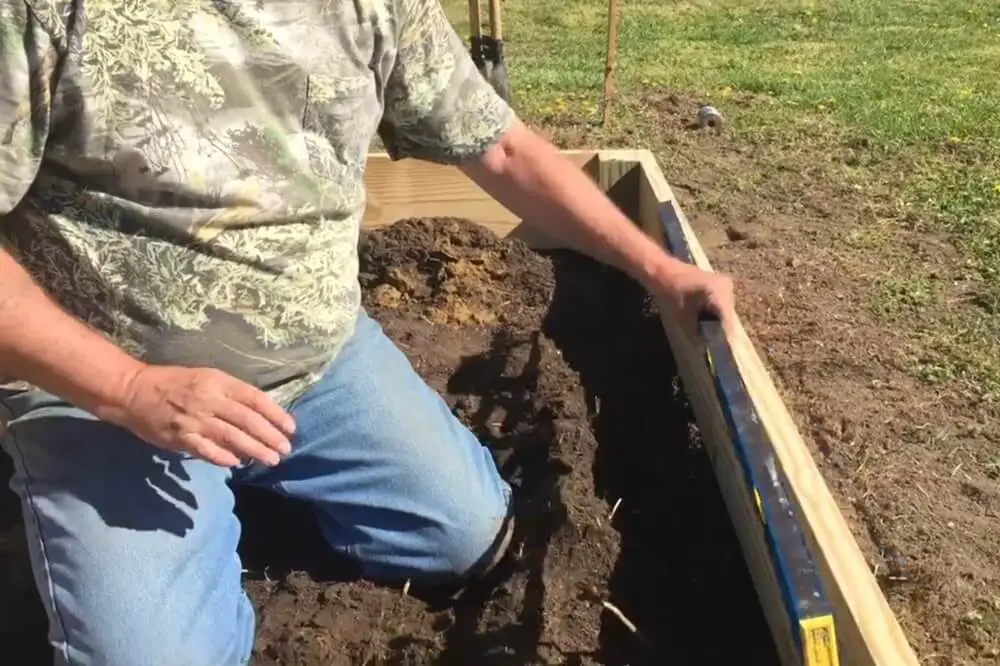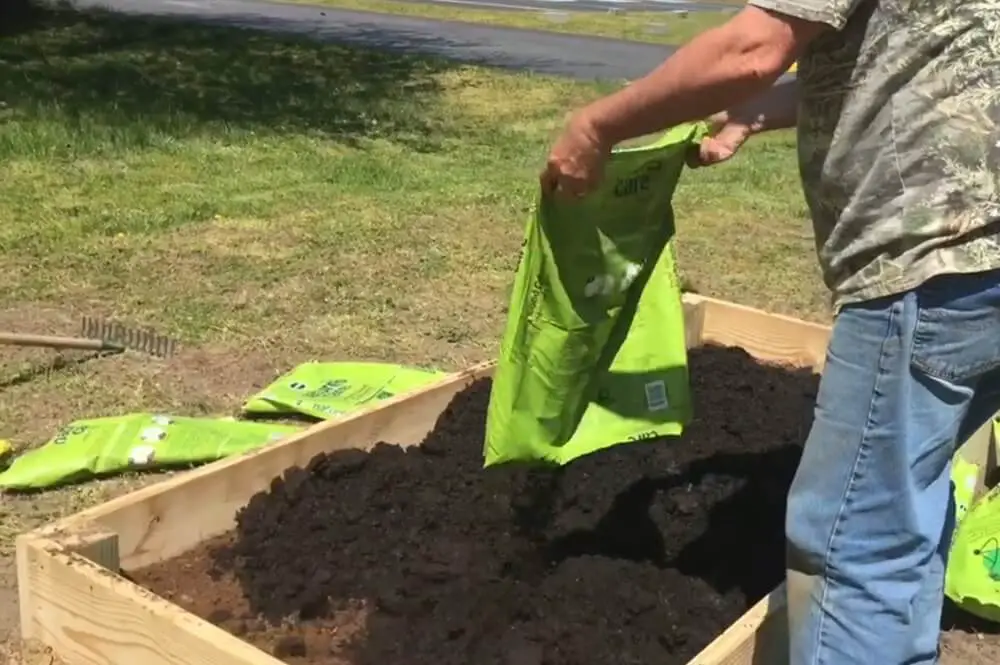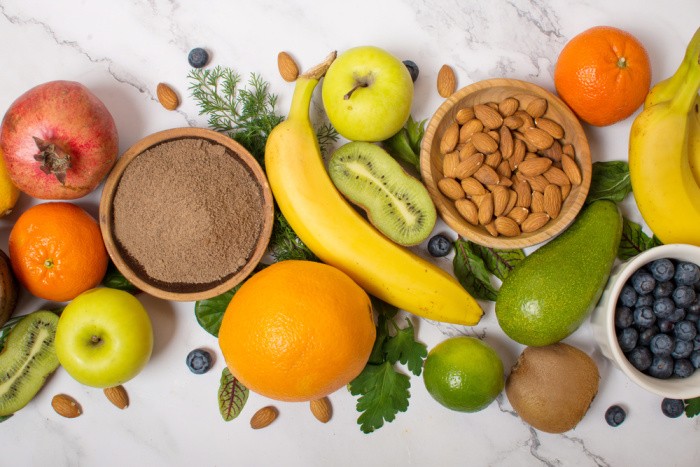
As preppers, we want to stock up on enough food for everyone in our households, but sometimes, we forget that quality is just as important as quantity. If we’re at a point where we have to rely on our food stock, we want to get all the nutritional value we can to stay healthy. So, in addition to stocking up on canned goods, baking goods, and long-shelf-life items, there are a few superfoods you should stock up on.
What are Superfoods?
Superfoods have been used as a marketing tool to influence food trends and sell products. They don’t have their own food group, but some foods are particularly beneficial to health and well-being.
Superfoods are mostly plant-based foods but also include some fish and dairy products. These are considered superfoods because they are thought to be nutritionally dense and good for your health. They contain various nutrients, such as antioxidants, healthy fats, fiber, and crucial vitamins your body needs. Consuming foods high in nutrients (superfoods) is a great idea, but it’s essential to consume a variety of nutritious superfoods, not just one or two as you try to eat a balanced diet.
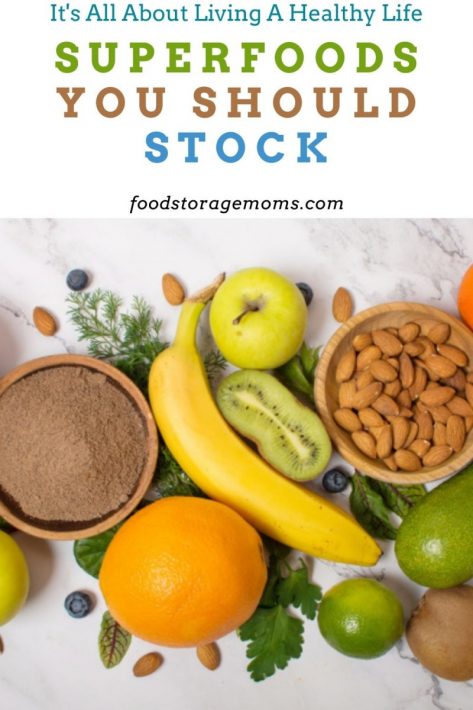
Superfoods You Should Stock
Although superfoods was a term coined to market certain food products to you, there are several foods worthy of that title that you should stock. Here are seven foods that may be worthy of the title Superfoods!
#1 Leafy Greens
Dark leafy greens are a great source of nutrients, such as zinc, calcium, folate, iron, magnesium, vitamin C, and fiber. In addition to being packed with nutrients, they also have the potential to reduce your risk of chronic illnesses, including heart disease and type 2 diabetes. These foods provide some of the daily fiber we all need, particularly for gut health. Some of the best leafy greens to stock include:
These leafy greens aren’t just for salads, they make great soups, smoothies, and stir-fries. And you can increase their shelf life by freezing them!
Related: How to Dehydrate Kale and Make Kale Chips
Related: Quick and Easy Way to Freeze Fresh Spinach
# 2 Berries
Over time, our bodies can build up and carry many yucky things, such as free radicals. Eating foods high in antioxidants is the best way to eliminate the gunk. Berries are powerhouses of vitamins, minerals, fiber, and antioxidants. Eating berries reduces the risk of heart disease, cancer, and inflammatory conditions. Some of the best berries to stock include:
Berries are great to eat by themselves, but they can also be added to salads, baked treats, and smoothies. You can dehydrate or freeze them to increase their shelf life.
Mark is a fan of all kinds of berries. He’ll put them on his ice cream for a late night treat, but also loves them as preserves with peanut butter on sandwiches.
Related: Dehydrating Strawberries The Quick and Easy Way and How to Dehydrate Blackberries
#3 Nuts and Seeds Superfood
Rich in fiber, vegetarian protein, and healthy fats, nuts and seeds are great superfoods. In addition to general nutrition benefits, they are also loaded with anti-inflammatory and antioxidant properties, which protect your body against oxidative stress. I suggest stocking a variety of your favorite nuts and seeds, including:
- Almonds
- Pecans
- Pistachios
- Walnuts
- Cashews
- Brazil nuts
- Macadamia nuts
- Peanuts
- Sunflower seeds
- Pumpkin seeds
- Chia seeds
- Flaxseeds
- Hemp seeds
Nuts and seeds are delicious snacks and great in salads, soups, stews, and other recipes. The great thing is that they have a decent shelf life. You can store them in unopened packages in your pantry for up to 6 months past their best-by dates, in the refrigerator for up to a year, and in the freezer for up to two years! I store all my nuts and seeds in the freezer to keep them from going rancid.
Related: Quick and Easy Healthy Spicy Nuts Recipe
#4 Garlic
Closely related to onions, garlic is an excellent source of manganese, vitamin C, vitamin B6, selenium, and fiber. Not only is garlic good for you, but its distinct flavor can add pizzazz to almost any recipe. In addition, garlic may be effective in reducing cholesterol and high blood pressure and supporting your immune system.
Keep garlic in a cool, dry place. Storage life in temperatures of 60 degrees Fahrenheit is 3 to 5 months.
Related: Garlic Everything You Need to Know
#5 Tumeric Superfood
Whether you like turmeric or not, you may want to stock it, especially for sick days. This bright yellow spice is closely related to ginger and is used in India for a variety of medicinal benefits.
The active compound in turmeric is curcumin, a potent antioxidant and anti-inflammatory agent. Studies have shown that turmeric may be effective in treating and preventing chronic diseases such as cancer, heart disease, and diabetes. It also aids in wound healing and pain reduction.
#6 Sweet Potatoes
Sweet potatoes are root vegetables loaded with various nutrients, including potassium (heart-healthy), fiber, and vitamins A and C. In addition to these nutrients, sweet potatoes are a great source of carotenoids, which are antioxidants.
Be sure to store your potatoes in a dark, dry place with some humidity. Sweet potatoes can be stored for about a month. To get the most extended shelf life possible, read my post, Potatoes: How to Store After Harvesting.
#7 Avocado
Did you know that an avocado is a fruit? Many treat it like a vegetable, but it’s a fruit. Avocados are rich in a variety of nutrients, including fiber, vitamins, minerals, and healthy fats our bodies need. Additionally, they are high in Oleic acid, which is linked to a reduction in inflammation in the body.
Firm, uncut avocados can be stored in the refrigerator for up to two weeks. But if you want to keep them for up to six months, you can freeze them. Cut the avocados in half, peel the skin, and wrap each half separately in plastic wrap. Then, please place them in a freezer bag and freeze them.
Other Superfoods Posts to Check Out
If you want to learn more about foods you should stock or other superfoods, check out some of these other posts below:
- Health Benefits of Nuts
- Why You Should Stock Sauerkraut
- Garlic: Everything You Need to Know
- Sweet Potatoes: Everything You Need to Know
- 21 Reasons Why I Store Garlic
- Avocados: Everything You Need to Know
- Coconut Oil: Everything You Need to Know
- Chia Seeds: What You Need to Know
Are there meats that would qualify as superfoods?
Meats are known for their high protein content. We don’t eat a lot of meats, but do try to have some fish from time to time since they have healthy omega-3 fatty acids. Consider having salmon, sardines, trout, and tuna. Many come as canned goods, making their storage an easier task.
If you have concerns about protein in your diet, don’t forget that beans are a great source of protein. We like all kinds of beans, including black, kidney, lima, pinto, and great northern.
Final Word
Remember, stock what you eat! Just because it’s a superfood doesn’t mean you should stock it if you or your family dislike eating it. It won’t do you any good if you don’t eat it. Stocking up on long-shelf-life items and superfoods is crucial to your health and survival.
Make sure you have quality and quantity in your food stock items. Tell me about your experiences with these or other superfoods your family enjoys. Please keep prepping, and we must. May God bless this world, Linda
Copyright Images: Healthy Super Foods Deposit photos_448278326_s-2019
The post Superfoods You Should Stock appeared first on Food Storage Moms.
from Food Storage Moms

